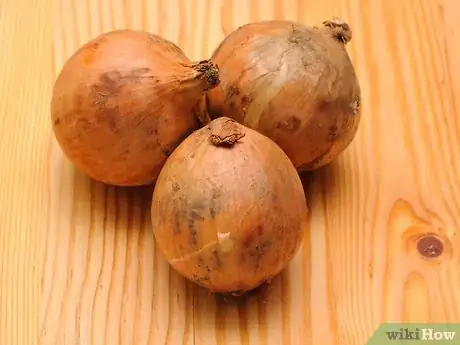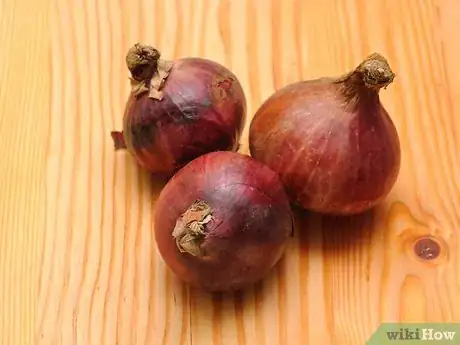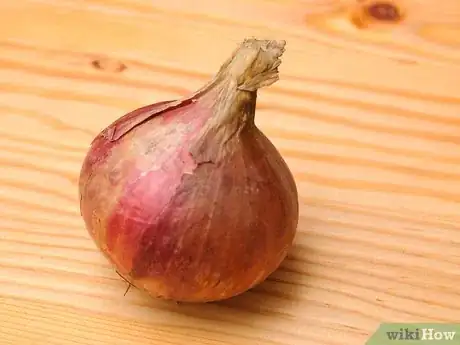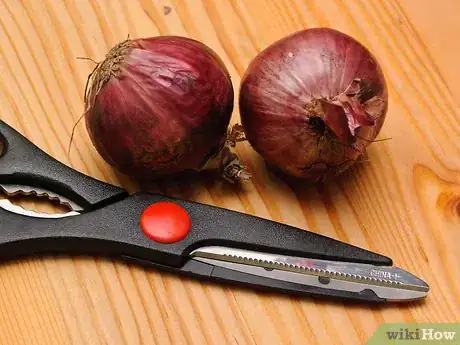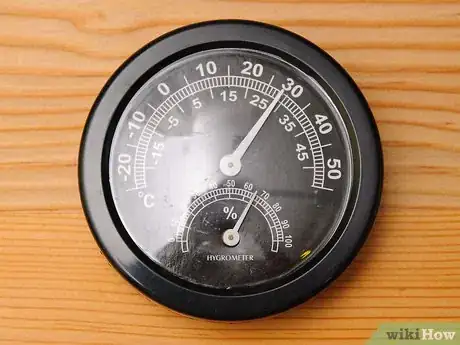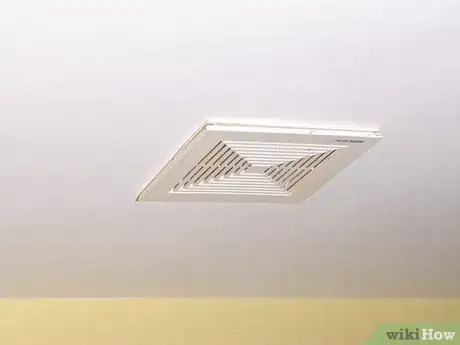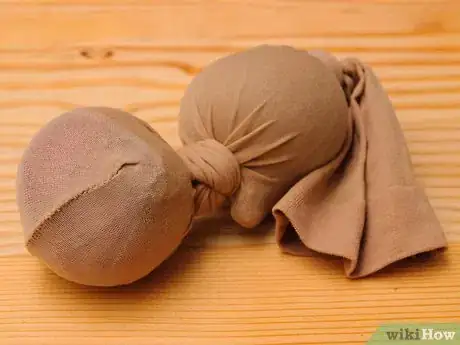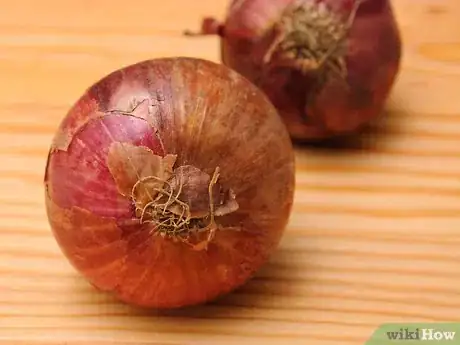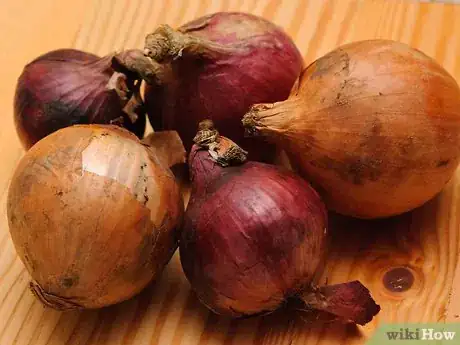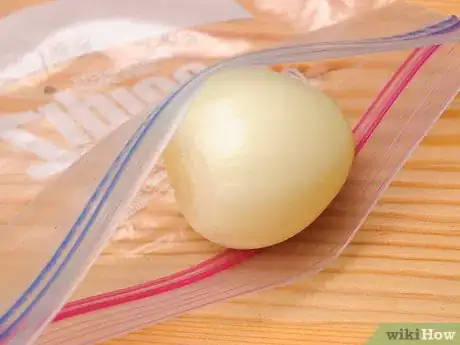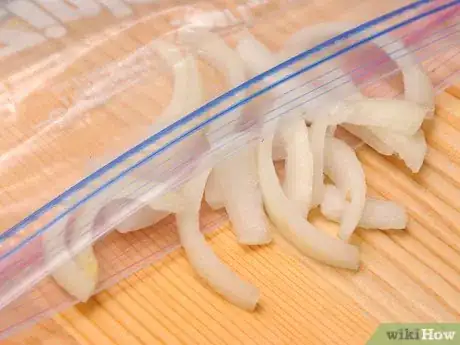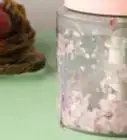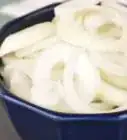This article was co-authored by Olivia Choong. Olivia Choong is a Plant and Gardening Specialist and the Owner of The Tender Gardener. With more than six years of experience, she specializes in gardening, permaculture, and self-sufficient and low-impact living practices. Her work has been featured in media outlets such as The Straits Times and Channel NewsAsia (CNA). Olivia holds a Bachelor of Mass Communications in PR and Journalism from Murdoch University.
There are 7 references cited in this article, which can be found at the bottom of the page.
wikiHow marks an article as reader-approved once it receives enough positive feedback. In this case, several readers have written to tell us that this article was helpful to them, earning it our reader-approved status.
This article has been viewed 730,035 times.
Onions are indispensable in the kitchen and they keep well. They are available all year. If you grow onions and store them you can cross them off your grocery list. Here's how to select onions to store them so they retain flavor and nutrition up to ten months:
Steps
Selecting Onions to Store
-
1Store late-season onions. The onions you harvest in the spring and summer are not hardy enough to store. They should be eaten within a few weeks of harvesting. Plan to store onions that are harvested in the fall, since these varieties are able to last through the winter.[1]
- If you grow your own onions, plan to store onions that you plant during the spring.
- Onions are ready to harvest for storage in the late summer or early fall, when the top of the plant begins to fall over and dry up.
-
2Store pungent onions. Pungent onions, as opposed to mild onions, have sulfurous compounds that cause you to tear up when you chop them and also help preserve the onions through the winter. Mild onions don't have this self-preservation system, so they should be eaten a few weeks after they're harvested. The following varieties of globe onions do well in long-term storage:[2]
- Yellow onions such as ebenezer, yellow globe, downing yellow globe, and yellow globe danvers.
- White onions such as Southport white globes. These should only be stored if their necks are small.
- Red onions including wethersfield and Southport red globe.
Preparing Onions for Storage
-
1Dry the onion skins. After the onions are harvested, spread them out in a ventilated area so that the skins can harden. Do not remove the leaves. Allow the onions to cure for two to four weeks.[3]
- Dry the onions in an area away from sunlight and humidity. Sunlight can taint the taste of the onions and make them bitter. Lay a tarp in your garage or a shed. The environment should be dry, warm and breezy.
- The onions are finished curing when their stems are no longer green. The onions' skin should be withered around the stem and wrapped tightly around the onions.
-
2Trim the onions. Once the stems are completely dry, use sharp scissors or a knife to trim the roots from the onions.
- Discard onions that still have green stems at this point, as well as those that are bruised or have broken paper.
- Cut the leaves at least an inch above the bulb, or leave them intact and braid the leaves together.
Setting Up the Storage Space
-
1Choose a cool, dark place to store your onions. The space should have a temperature maintained between 40 to 50° Fahrenheit, or 4 to 10° Celsius. Many people opt to store their onions in a root cellar or basement. If the space is too warm, your onions will begin to sprout. If the location you chose is too cold, the onions will start to rot.[4]
-
2Keep the storage space dry. Onions easily absorb moisture, and the wetness in the air will rot your produce. The humidity level should be kept at 65 to 70 percent.[5]
-
3Make sure the space is well ventilated. Keeping air flowing around the onions will help prevent molding and rotting.
- For good ventilation, hang the onions in mesh baskets, netted bags or pantyhose.
- If you decide to use pantyhose as a storage option, tie a knot between each bulb. Use the bulbs from the bottom, cutting the onion out below the knot so the onion above it stays secure. You can also use string or twist ties in between the onions to keep them separate.
-
4Try storing your onions in pantyhose. Yes, you heard right — pantyhose. Tie off the bottom of the pantyhose, introduce an onion into the sleeve, and tie off the pantyhose again just above the onion. Introduce the next onion into the sleeve and repeat until the pantyhose sleeve is tied off with as many onions as it can fit.[6]
- Storing onions in this way allows them to breathe properly. Any moisture they may have already come in contact with will soon evaporate, giving your angiosperms a longer shelf life.
Using Stored Onions
-
1Use thick-necked bulbs first. The thick-necked bulbs are the oldest and will not last as long as the younger, smaller onions.
-
2Inspect stored onions regularly. Take a moment every now and then to browse over your onions. Throw out any that have started to rot.
- You can still eat onions that have started to sprout. Just chop away the green part before using them in a recipe.[7]
- If an onion is slimy or discolored, don't risk eating it.
- Save extra bulbs to plant in the spring.
-
3Store peeled onions in the freezer. Chop your onions and place them in a flat layer on a cookie sheet and freeze. After they are frozen, remove the onions from the sheet and store them in Ziploc bags or storage containers in the freezer. One of the down sides of this option is limited storage space.[8]
-
4Wrap leftover onions and store them in the refrigerator. When cooking, partial onions often remain from preparing the meal. To properly store these remnants for use later, wrap the onion in plastic and place in the vegetable drawer in the refrigerator.[9]
Community Q&A
-
QuestionCan I keep onions in my fridge?
 Community AnswerYou can, for a certain amount of time. You should put it in an airtight container and keep it in a vegetable drawer if you have one. You may also consider purchasing an onion saver.
Community AnswerYou can, for a certain amount of time. You should put it in an airtight container and keep it in a vegetable drawer if you have one. You may also consider purchasing an onion saver. -
QuestionCan I use a cut onion that's been left out all night on the counter?
 Community AnswerIt kind of depends on room temperature, how long it was left out and so forth, but onions don't go bad very quickly. If the onion has gone bad, you should be able to spot mold, discoloration, sliminess, etc.
Community AnswerIt kind of depends on room temperature, how long it was left out and so forth, but onions don't go bad very quickly. If the onion has gone bad, you should be able to spot mold, discoloration, sliminess, etc. -
QuestionShould I refrigerate onions?
 Community AnswerIt depends on if they are chopped or not.
Community AnswerIt depends on if they are chopped or not.
Warnings
- Keep onions away from potatoes when you store them. Onions will absorb moisture from the potatoes, causing the onions to spoil.⧼thumbs_response⧽
References
- ↑ https://www.almanac.com/plant/onions
- ↑ https://www.almanac.com/plant/onions
- ↑ https://www.growveg.com/guides/the-art-of-harvesting-onions/
- ↑ https://www.gardeners.com/how-to/harvest-cure-store-onions/7366.html
- ↑ https://www.livestrong.com/article/527905-what-foods-are-stored-in-high-humidity-vs-low-humidity/
- ↑ https://www.thespruceeats.com/how-to-store-onions-1389144
- ↑ https://www.cooksillustrated.com/how_tos/6673-using-sprouted-onions?ref=HowTo_browse_3
- ↑ https://www.healthline.com/nutrition/how-to-store-onions
- ↑ https://www.healthline.com/nutrition/how-to-store-onions
About This Article
If you want to store onions fresh from the garden, spread them out in a warm, ventilated area for 2-4 weeks so the skins can harden. Once the skins are dry, use sharp scissors or a knife to trim the roots at least 1 inch above the bulb. Choose a dark, well-ventilated place to store your onions with a temperature that stays between 40 and 50 °F, such as a root cellar or a basement. If you like, you can place your onions into pantyhose, tying knots between each onion, to allow them to breathe and stay dry. For mor tips, including how to use your onions after storing them, read on!
